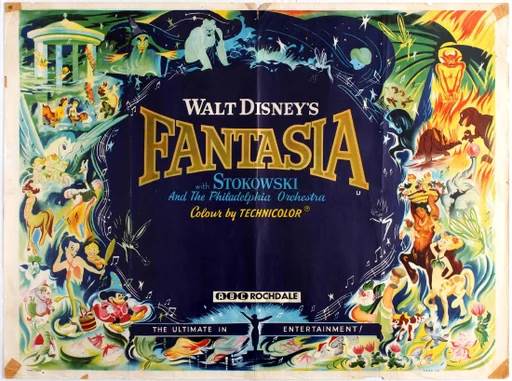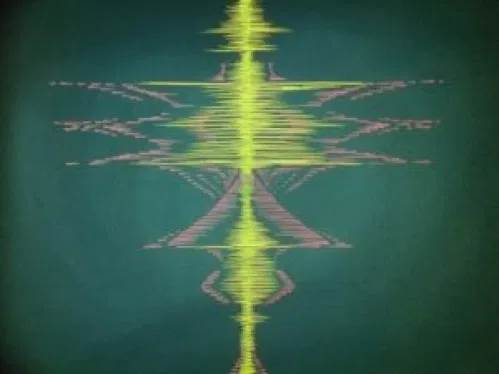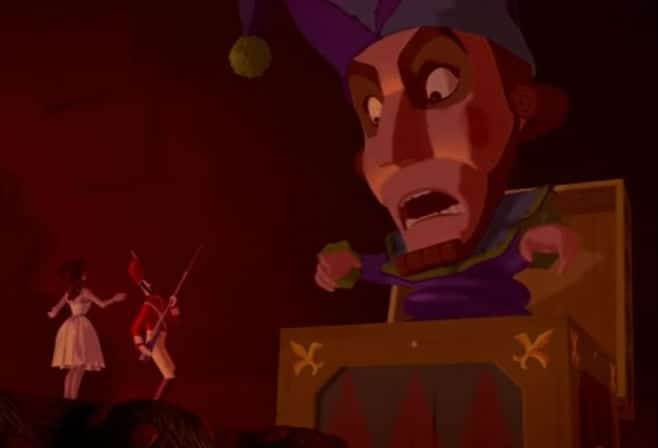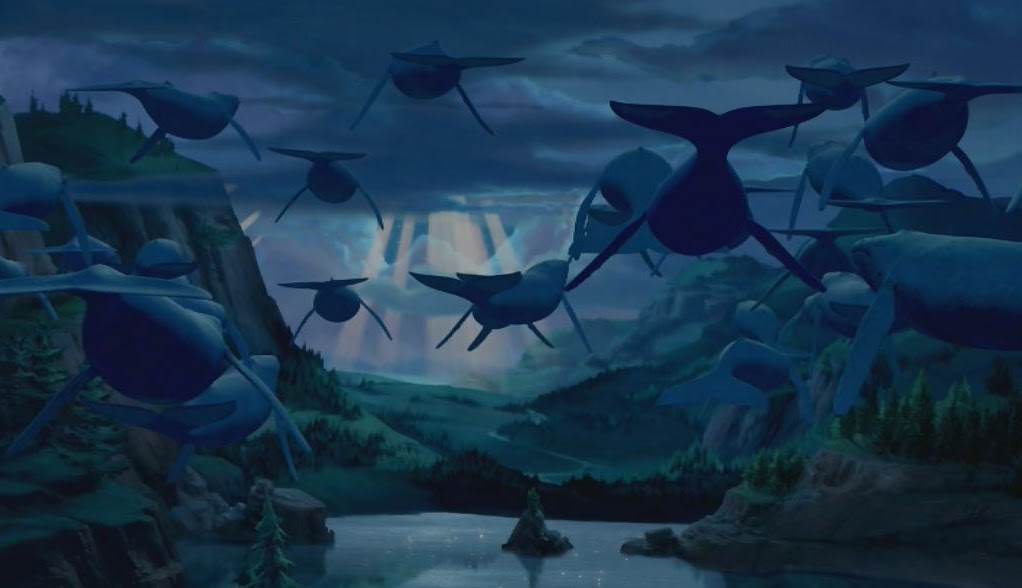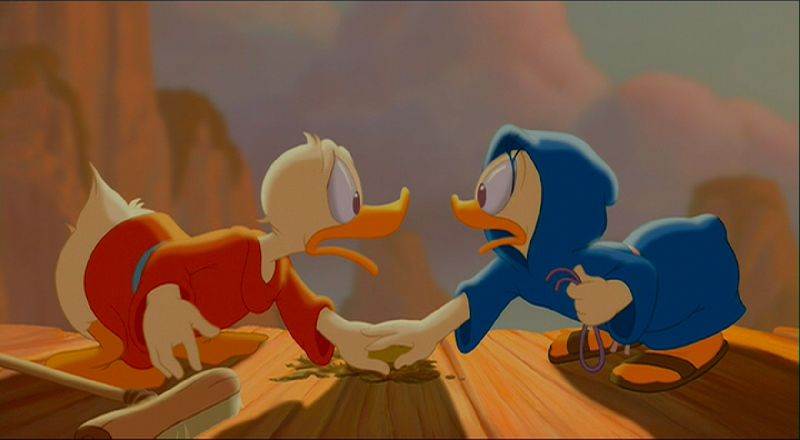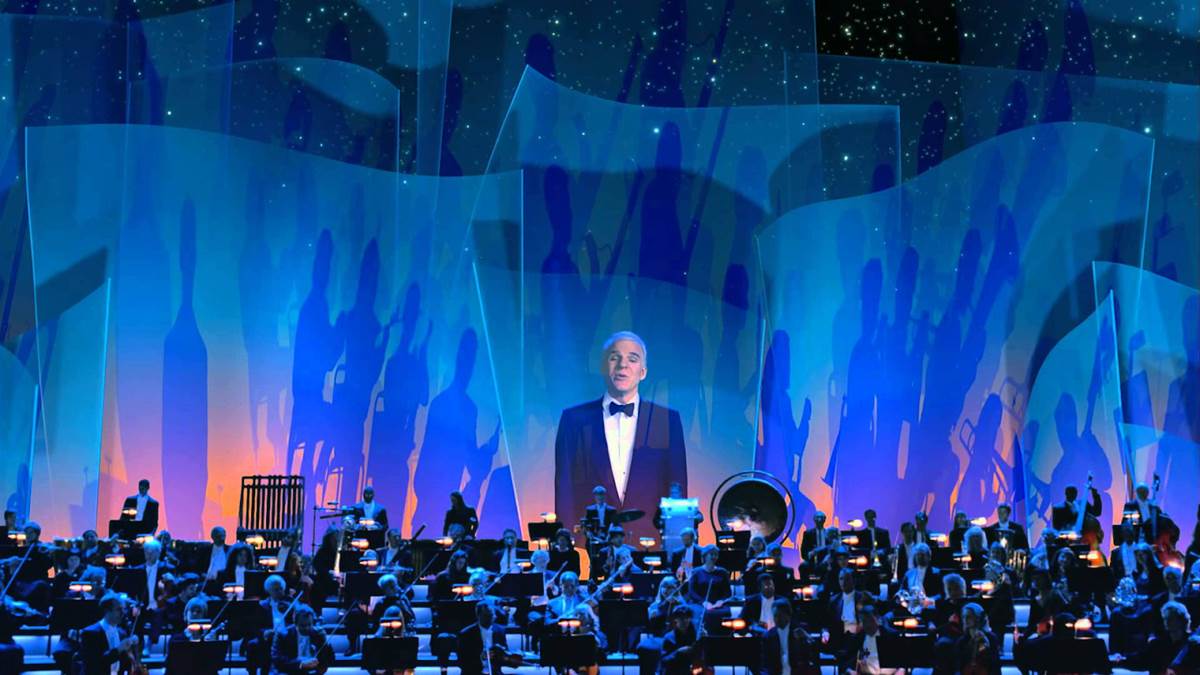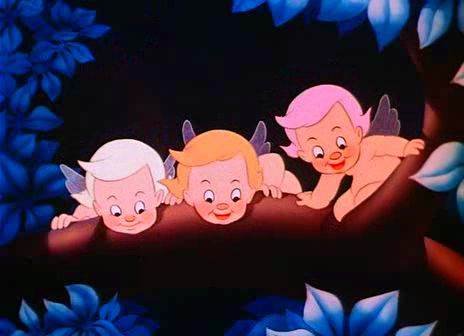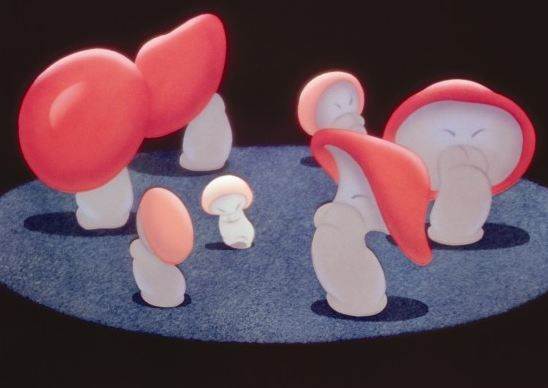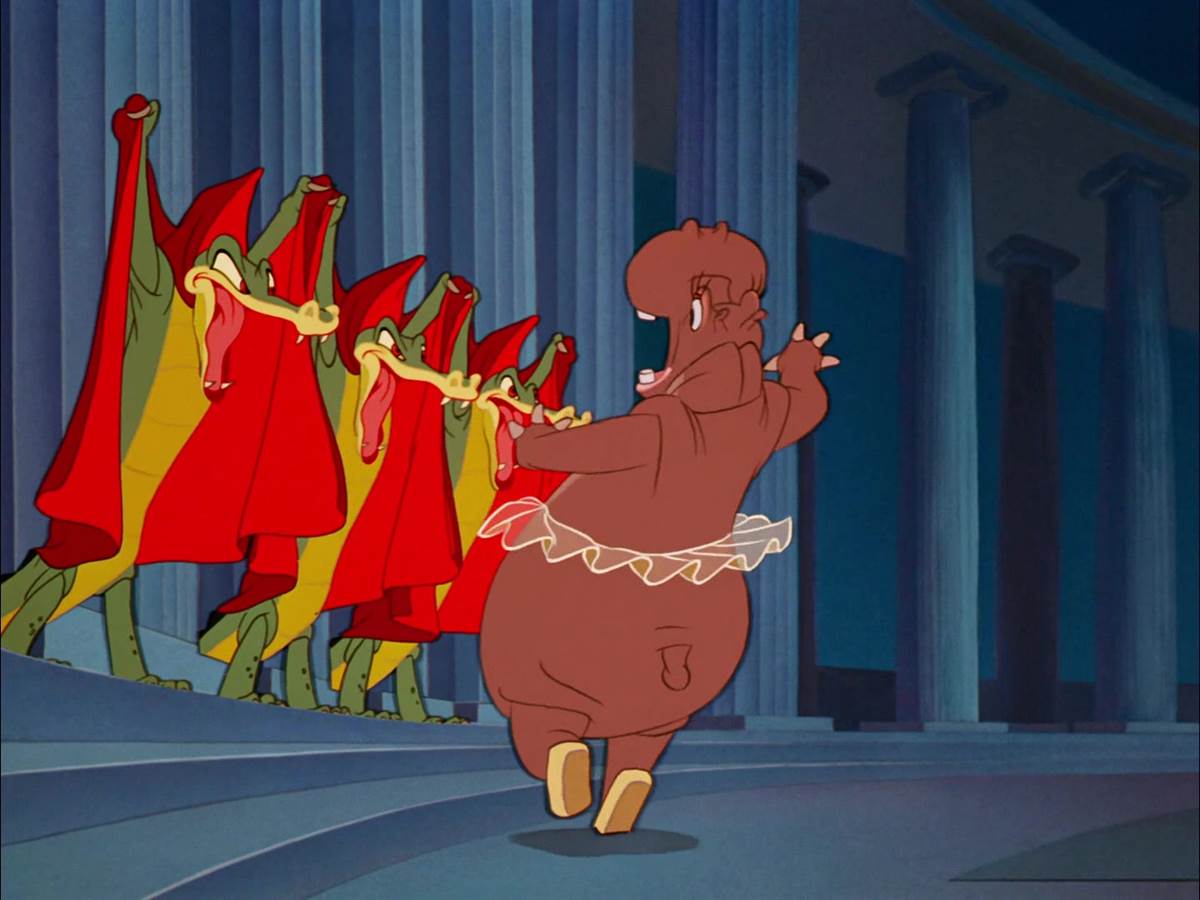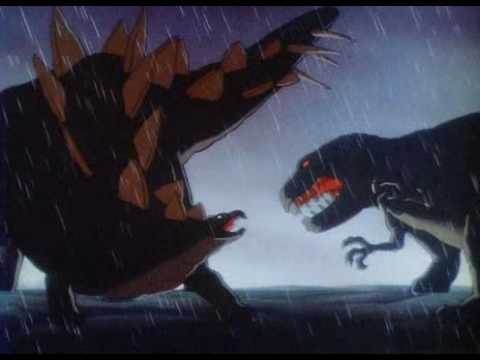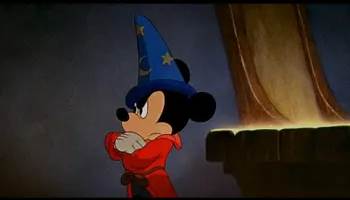80 years ago today, November 13th, 1940, Fantasia was released to theaters, way ahead of its time. A pioneering “concert feature,” Walt Disney wanted the film to be an ever changing showcase that would feature new segments and returning favorites while also showcasing new advancements in animation and theater technologies. Walt had grand ideas for this feature, including plans for dimensional sound, scent effects (flower smells for the ballet in The Nutcracker Suite), and even the notion of 3D for Toccata and Fugue, giving the audience cardboard Polaroid glasses along with a program.
The only one of these ideas to come with the film was Fantasound, the first stereophonic sound, but proved too costly for most theaters to install.
Sadly, the film did not prove popular with audiences at large until much later, during its second reissue in 1956 when suddenly a then-16-year old film was appreciated by millions prompting the 130 minute title to be re-released continuously until the advent of home video and DVDs.
Walt’s nephew Roy E. Disney was in charge of Walt Disney Feature Animation in the 90s, and legend has it, was working behind then Walt Disney Studios’ chief Jeffrey Katzenberg’s back to round up some animators to work on continuing Walt’s idea of an ever-changing concert feature, giving rise to Fantasia 2000. Echoing the original sentiments dating back to the 30s and 40s, Fantasia 2000 would showcase new segments, bring back old favorites, and even highlight new theater technologies with a touring run on IMAX screens. Fantasia 2000 opened nearly 60 years after its predecessor in December of 1999.
One of the main reasons (in my opinion) that Fantasia and Fantasia 2000 aren’t well received by mass audiences as a whole is that the traditional narrative structure is gone. It’s not 90-120 minutes telling a single story but rather short stories with no dialogue or just plain abstract interpretations of what an artist saw in their mind while listening to classical music. That said, I’ve taken it upon myself to rank the segments from both films on the anniversary of the original for all to enjoy, and I highly recommend watching the films for yourself to form your own opinion.
Honorable Mention: Intermission: The Soundtrack – Fantasia
Originally cut by bankers upon the initial release, the intermission for Fantasia showcases “The Soundtrack” as a primary character of the film. Deems Taylor, who acts as host of the entire feature, introduces a shy line that comes more to life with each new instrument introduced. Disney artists were fascinated with the look of the soundtrack, giving it personality bringing it off the left side of the film (real film, that was used in movie making, once upon a time, long ago) and onto the screen. As this is part of the intermission for Fantasia, leading to a darkened theater prior to The Pastoral Symphony, this brief entry (that actually wasn’t seen by many until 1946’s first reissue of the film) isn’t widely associated with the film like the other sequences.
Toccata and Fugue in D Minor
What we see on the screen for Toccata and Fugue sets the tone of the feature immediately as we begin, designed to be the shifting abstract images “that might pass before the mind’s eye” as though we were in a concert hall listening to the music. To get especially artsy (fair warning: it’s going to happen a lot in this article), this segment also features a silhouette of the podium with conductor Leopold Stokowski. The silhouette serves as a peak, almost like a mountain top, showcasing whoever is at the top. This is a recurring theme in the film, more prominent in segments like Night on Bald Mountain and The Sorcerer’s Apprentice where we see characters “conducting” on mountaintops.
Symphony No. 5
Similar to how Toccata and Fugue opens with abstract imagery, Fantasia 2000 uses the same concept to showcase abstract triangles flying similar to butterflies to Beethoven’s Symphony No. 5. In the initial run, seeing these abstract images on a seven-story IMAX screen was a perfect introduction to the rest of Fantasia 2000, reminding the viewer that this film is entirely different, but true to the original on which it is based. Sadly, though featured in the introduction of the film and peppered throughout, the silhouettes of the orchestra are missing from this piece which, yes, makes it different, but also would have been a nice tribute.
Piano Concerto No. 2 / The Steadfast Tin Soldier
Full disclosure. I consider The Steadfast Tin Soldier to be pure nightmare fuel. More than Night on Bald Mountain. More than The Firebird. This murderous jack-in-the-box that will haunt the dreams of any viewer (and channels Claude Frollo from The Hunchback of Notre Dame while doing it) is only one part of the story. Toys awaken in the night by a clock that features a dancing ballerina and a new group of toy soldiers awaken for their march. One soldier, with a broken leg, sees the ballerina balancing on one foot and mistakenly assumes she suffered the same fate and is quite taken with her. He approaches only to realize he was wrong but they are rather fond of each other regardless, much to the chagrin of a crazy jack-in-the-box that had his own sights set on the ballerina. This segment heavily showcases computer animation that was in production not too long after Toy Story and A Bug’s Life, and those two entries are from a different studio, Disney Feature Animation was barely entering the medium, and in The Steadfast Tin Soldier it kind of shows, which adds to the discomfort of the piece. The story and the music work beautifully together though, despite the whole thing just being a tad off-putting. On a semi-related note, this segment is also why I request any other building at Disney’s All Star Movies Resort than the Fantasia 2000 building if I happen to stay there, as the jack-in-the-box appears as a 30-foot tall icon in the center of it.
Pines of Rome
Pines of Rome is absolutely stunning. It showcases brilliant computer animation, especially in terms of lighting and the water, but also features hand drawn elements like the eyes of the whales. This helps convey so much emotion as we watch the story play out of a little whale that gets separated from their parents and pod. Sadly, this segment has a personal stigma attached to it, as it was the exact moment when I learned my friends (and general audiences by association) don’t like this kind of feature film as they were still confused by the lines and triangles from minutes prior (Symphony No. 5) and now this story of whales in the water, flying, and then space. It wasn’t until later when Mickey and Donald appeared that they audibly said “Oh okay, this is good again,” while I just stared at an IMAX screen with a furrowed brow wondering why my friends didn’t enjoy it as much as I did.
Pomp and Circumstance
It was widely known that in the mid to late 30s, Mickey Mouse’s popularity was waning, especially to his character friends like Goofy and Donald Duck. That’s why Walt made Mickey Mouse the star of The Sorcerer’s Apprentice, but more on that a little later. Fantasia 2000 would see the similar treatment (popularity aside) happen with Donald Duck and his beloved lady, Daisy Duck as they played a part in the story of Noah’s Ark. The pair get separated and try to find each other as the great flood begins, all set to the music of Pomp and Circumstance. The music, in my opinion, is the detriment to this story as it is more widely associated with graduation ceremonies. They bring up this exact point in the introduction, stating it was meant to be used for all occasions. That said, combining the music with animals marching up and down ramps two by two, still seems very much like a graduation and kind of distracts from the story at hand where we’re hoping to see Donald and Daisy reunited but instead I feel like I’m waiting for an elephant to receive a diploma. Hey, I’ve seen stranger things occur in a Fantasia film.
Let’s take a short break to talk about the introductions of the different segments of Fantasia and Fantasia 2000. The original Fantasia saw one man as the master of ceremonies for the concert feature, Deems Taylor. He introduced each piece with a bit of background about the music and the composers and on with the show. Legend has it that many of his original audio recordings were inadvertently destroyed, so in later remasters and releases, Deems Taylor’s voice sounds an awful lot like Corey Burton.
Fantasia 2000 took a decidedly different, and some would say more entertaining approach to the hosting duties. Each segment is introduced by a different celebrity, providing some insight into the art or the music before the piece begins. Steve Martin, Quincy Jones, Bette Midler, Penn and Teller, Angela Lansbury, and even Roy Disney all make appearances, among others.
The Carnival of the Animals
When I first saw this film, I immediately thought “Okay, this is the best one.” The shortest of the sequences, but easily the most fun. While rewatching as I grew up and aged and matured, this is still the most fun sequence of Fantasia 2000 but I will no longer say it’s the best. I have great admiration for the work of animator Eric Goldberg and he took the helm of this segment. Piggybacking on an idea by Joe Grant (who did story work for the original Fantasia) that saw ostriches playing with a yo-yo, they worked and evolved the idea into that of a flamingo with the classic toy. The animation is elegantly cartoony, with the watercolor hues changing as the mood shifts throughout, and though short, this piece is full of humor, fun, and whimsy. Plus, the introduction features a normally serious James Earl Jones (and a cameo from Eric Goldberg) asking “What will happen if you give a yo-yo to a pack of flamingos?” which sets the tone for the piece.
The Pastoral Symphony
While I mostly associate this segment with a series of parade floats in the now defunct Spectromagic parade at Walt Disney World, The Pastoral Symphony is how Walt Disney and his artists translated the different movements of Beethoven’s Sixth Symphony. Based heavily on greek myth, we see not only Mount Olympus, but Bacchus, Diana, Pegasus, and different centaurs. A fan of Greek myth will also enjoy The Pastoral Symphony to catch every detail the artists put in. I hate to say, I like the concept art from this segment more than the actual segment proper, with most of it clearly inspiring a film that would come a generation ahead from Fantasia from the same studio, Hercules.
The Nutcracker Suite
There are so many iconic pieces of The Nutcracker Suite from the original Fantasia that it’s hard to believe they all came from the same piece. Whether it be the dancing mushrooms, the plants with the russian style hats/blooms, and even the fairies on the ice. This is THE bar for dancing in animation (along with Dance of the Hours) but most striking to me is the Arab Dance portion of the sequence, which features an underwater ballet and the thing to keep in mind is this is the late 30s and 40s. There are no computers. There is no algorithm. The fluidity, the beauty, it’s all done by hand, and beautifully timed. Rightfully, many associate The Nutcracker Suite with Christmas, but when I hear any part of the music, I’m immediately taken to the master class that is this segment of Fantasia.
The Firebird
The Firebird is arguably the most beautiful piece of Fantasia 2000. So much so that the Spring Sprite (pictured at the top of the page) from the segment was featured on all the marketing material for the release of the film, and is widely associated with it to this day. Sidebar: She’s also prominently featured in the original version of Disney California Adventure’s World of Color. Heavily inspired by the 1980 eruption of Mt. St. Helens, The Firebird sees the destruction of a natural landscape built by a playful and elegant Spring Sprite by a monstrous, well, Firebird that erupts out of a mountain. The animation and the music go beautifully hand in hand, at one point causing a jump scare in the audience that is hard to achieve in any scenario. The sweeping combinations of both the Spring Sprite and the Firebird (also featured in World of Color’s original version before being replaced by Pirates) are astounding. The color palette used in just this sequence alone, natural earth tones, ashy grays, and the intense reds and oranges of the firebird all work together to create a full circle journey of nature reclaiming the mountainside. The result is beautifully poetic and is the perfect way to close out Fantasia 2000.
Dance of the Hours
The very fact that I had a hard time picking one single frame to use for Dance of the Hours shows just how classic this piece is. This piece, like the aforementioned Carnival of the Animals with the flamingos, is just plain fun. It is the greatest example of how to time animation with music as each note accompanies a pivotal gesture on screen, especially in the Alligator Ballet portion near the end. Even just the animal selection to represent the times of day (ostriches are the morning, hippos are the afternoon, elephants are the evening, and alligators are the night) everything is thought about and synchronized beautifully. This sequence also inspired the title of a book that is a wonderful resource for anyone who wants to learn more about animating dance, Hippo in a TuTu. The segment is hilarious, charming, and beautiful all at once and there is no doubt as to why it’s one of the more iconic scenes from any of the Fantasia films.
Rite of Spring
Some will argue with why I put this one so high on my list. Many folks who enjoy Fantasia recognize Rite of Spring as a beautiful piece but most are quick to point out its nearly 30 minute runtime. Walt Disney himself originally envisioned the piece as a story of the evolution of life on Earth. He was so successful in this effort that for a time Rite of Spring was available as a stand-alone short subject for use by science departments in schools. The different stories being told, from the different little families of different types of dinosaurs, the survival of the fittest between a Tyrannosaurus Rex and a Stegosaurus, and the Earth itself fighting back and evolving with volcanoes, earthquakes, and tidal waves, all add to the lasting legacy this piece has left. A legacy so deep that it was translated into three dimensions literal decades later as it was the main inspiration for what became the Primeval World diorama (currently on display at Disneyland) and even later at the Universe of Energy at EPCOT (since removed). You can also even find some concept art for Rite of Spring at Disney’s Animal Kingdom in Restaurantosaurus if you know where to look!
Rhapsody in Blue
Set during The Great Depression, we follow several different stories through their daily life before they each have something happen to them that turns their life around for the better. Also directed by Eric Goldberg, this segment is an ode to the artwork of famed artist Al Hirschfeld. This makes perfect sense since Goldberg, who was supervising animator of The Genie in Aladdin, was heavily inspired by Hirschfeld for the character. Using the same line style, the stories are told to the music of George Gershwin, who is the first American composer whose music is featured in a Fantasia film. The way the piece opens with the single note as a single line drawing out the New York skyline… perfection. The unique style and look of the piece with the perfect jazz accompaniment makes this the standout piece (in my opinion) of Fantasia 2000. It stands out so well that rumor has it that this piece was set to debut as a standalone short before Fantasia 2000 was even an option on the table. Just a little bit more trivia for Rhapsody In Blue, the segment was introduced by musician Quincy Jones, chosen because he personally knew both George Gershwin and Al Hirschfeld.
Night on Bald Mountain and Ave Maria
There are two segments that come to mind when thinking of the word Fantasia. One of them is the nightmarish winged creature born out of a mountainside in Night on Bald Mountain. That creature, Chernabog, is familiar to many a Disney fan and widely used in anything featuring Disney villains. He is the god of evil and death and appears out of the mountain itself, gathering to him evil witches, demons, and vampires as he wakes. This is another one of those amazing examples of “Hey remember what animation was like before computers?” The different silhouettes of creatures, the flashing lightning strobes as evil goes through the night, but more astoundingly, the fire. The fire effects in this piece are textbook examples of effects animation. The way it flickers, the way each flame dances. But if that weren’t enough, the morning comes and we see the beautiful pastel work illuminated as the bells ring and the light rises segueing into the beautiful conclusion of the film with Ave Maria. Even if you look past the animation and Chernabog himself (modeled after Dracula-actor Bela Lugosi), the music alone will take you right back to this piece and is commonly used in the Disney community, especially in a villain context.
The Sorcerer’s Apprentice
More prominently than Night on Bald Mountain, if I just say “Fantasia” you’ll just have an image of Mickey Mouse in a red robe and blue hat with moons and stars conducting the water and galaxy. This is the piece most commonly associated with Fantasia. So much so, that it was the only segment brought back with Fantasia 2000. The story of Mickey Mouse, an apprentice to Sorcerer Yensid, is widely known. He puts his master’s hat on to bring a broom to life that will help him do his chores, carrying water in from outside. Once he gets the routine down, he ends up falling asleep and dreaming of conducting the oceans and clouds and planets and stars before he wakes up to find that the broom is doing a little too well at fetching the water. Mickey chops up the broom to see all the splinters come to life and start retrieving the water before Yensid comes back in, parting the water and saving the day. The sorcerer (who is a caricature of Walt Disney right down to the raised eyebrow and backwards name) ushers Mickey out of the room as the music closes out with a few notes. This is another fantastic example where even if you hear just a few notes of the music, you’ll be picturing Mickey and the brooms. The Sorcerer’s Apprentice has also been parodied time and time again by the likes of The Simpsons, Tiny Toon Adventures, and so many more. This version of Mickey is among the most popular, robes and all, appearing in the parks for shows and meet and greets, and is common on highly sought after merchandise. He also introduces not only Disney anthology shows like The Wonderful World of Disney, but was a part of the logo and introduction on the original Walt Disney Classics VHS releases. It’s funny to think that The Sorcerer’s Apprentice was used with Mickey because his popularity at the time was waning. In fact, the original idea was to use The Sorcerer’s Apprentice as an entry of the SIlly Symphonies, and actually evolved so much that it also is part of Walt Disney’s inspiration for a “concert feature.” It’s also worth noting that in the evolution of Mickey Mouse, this was the first time he had eyes with pupils, and we learned his height in comparison to that of a human. After The Sorcerer’s Apprentice, Mickey Mouse meets conductor Leopold Stokowski, tugging on his tuxedo in silhouette form, harkening back to imagery of the orchestra we saw at the beginning of the film (and this list). It was actually this image that famed Disney sculptor Blaine Gibson used as reference when he sculpted the Partners statue that can be seen in the plaza hub of both Disneyland and Walt Disney World’s Magic Kingdom.
While maybe not the most popular of the 58 films of the Walt Disney Animation Studios (59 if you count the upcoming Raya and the Last Dragon), Fantasia is one of the most important works they’ve ever done. So much so that in 1990, one year after it was founded, Fantasia was added to the National Film Registry, a division of the Library of Congress that admits 25 films each year that are recognized as being significant and influential to film history. 80 years later it is still a shining example of animation. It allowed artists to experiment, it is a perfect collaboration of music and the art form, and has influenced many branches of the Walt Disney Company to this day with many not even realizing it.
I find it funny that the latest collection of Blu-Ray/DVD/Digital releases are titled “Walt Disney Signature Edition” and feature films he didn’t even touch, like Aladdin, yet his own masterpieces like Fantasia have yet to get the signature edition treatment. Fingers crossed for that release! Until then, Fantasia and Fantasia 2000 are currently streaming on Disney+.

